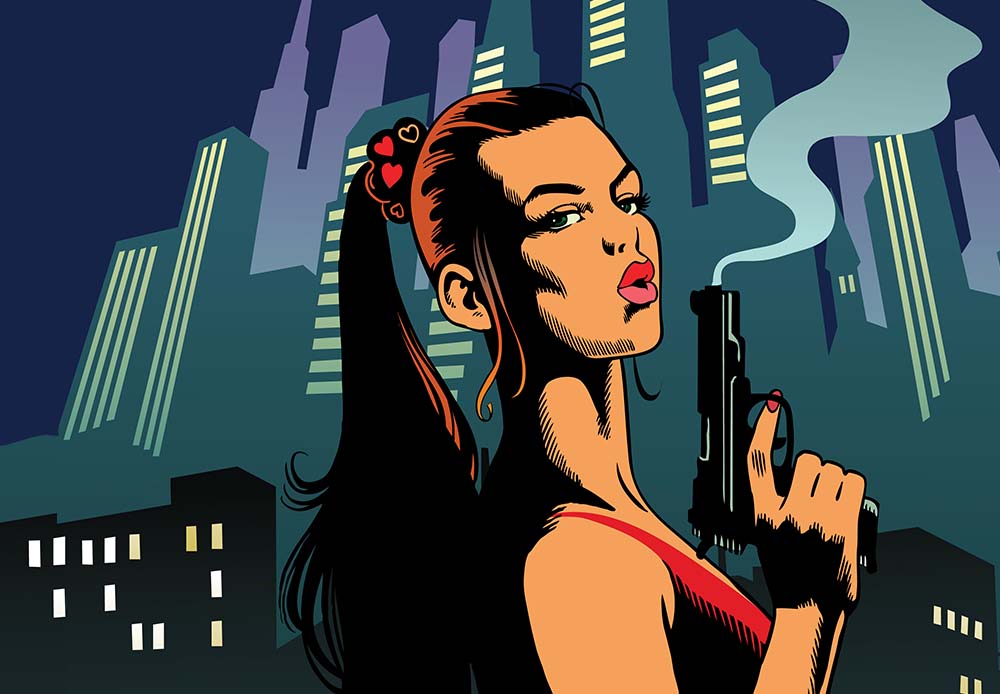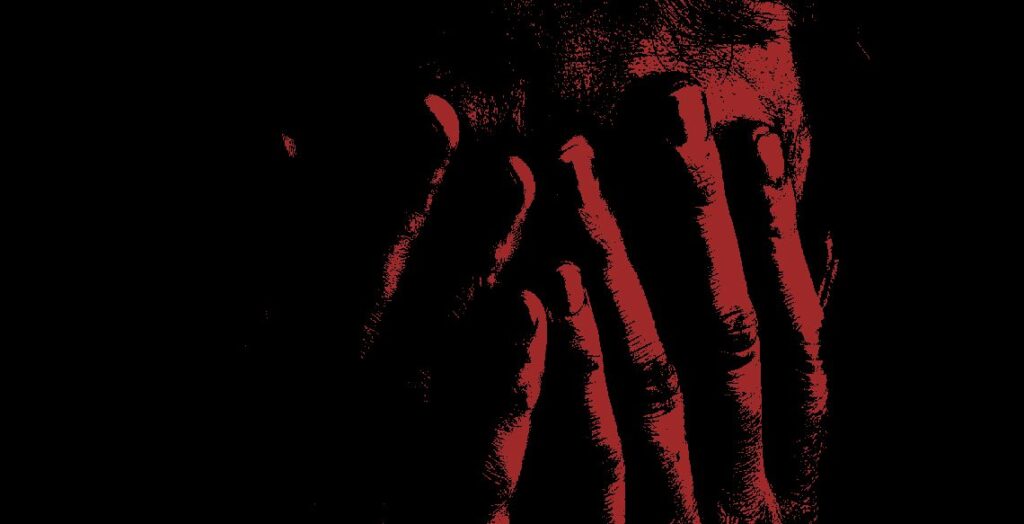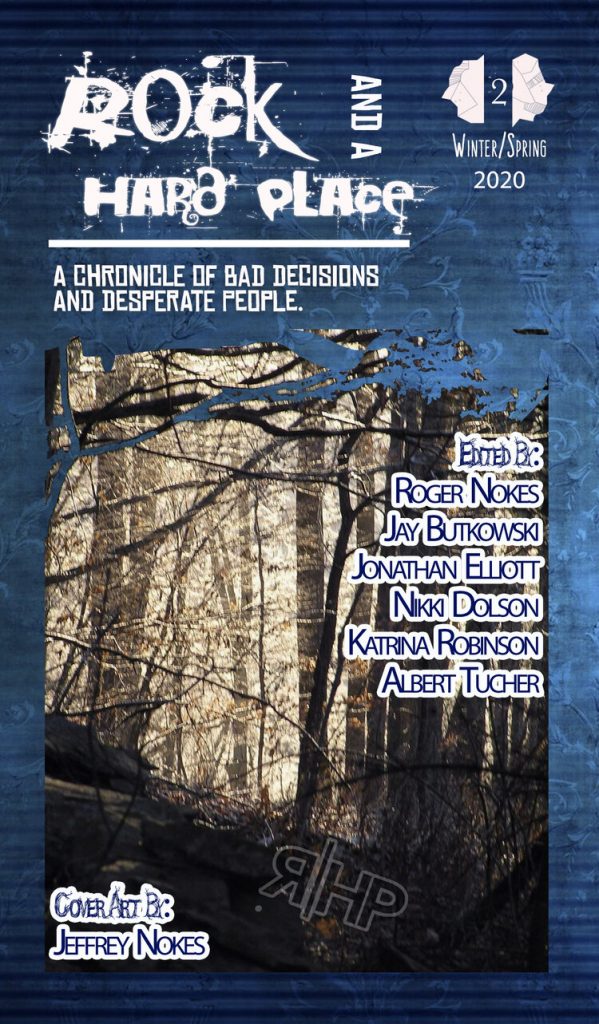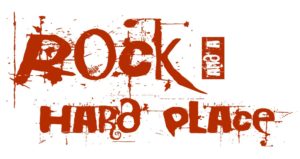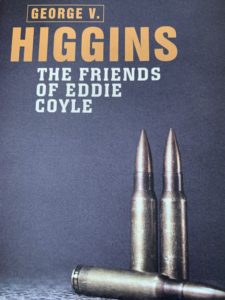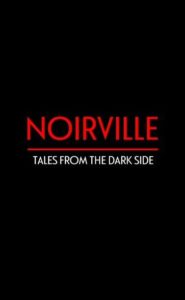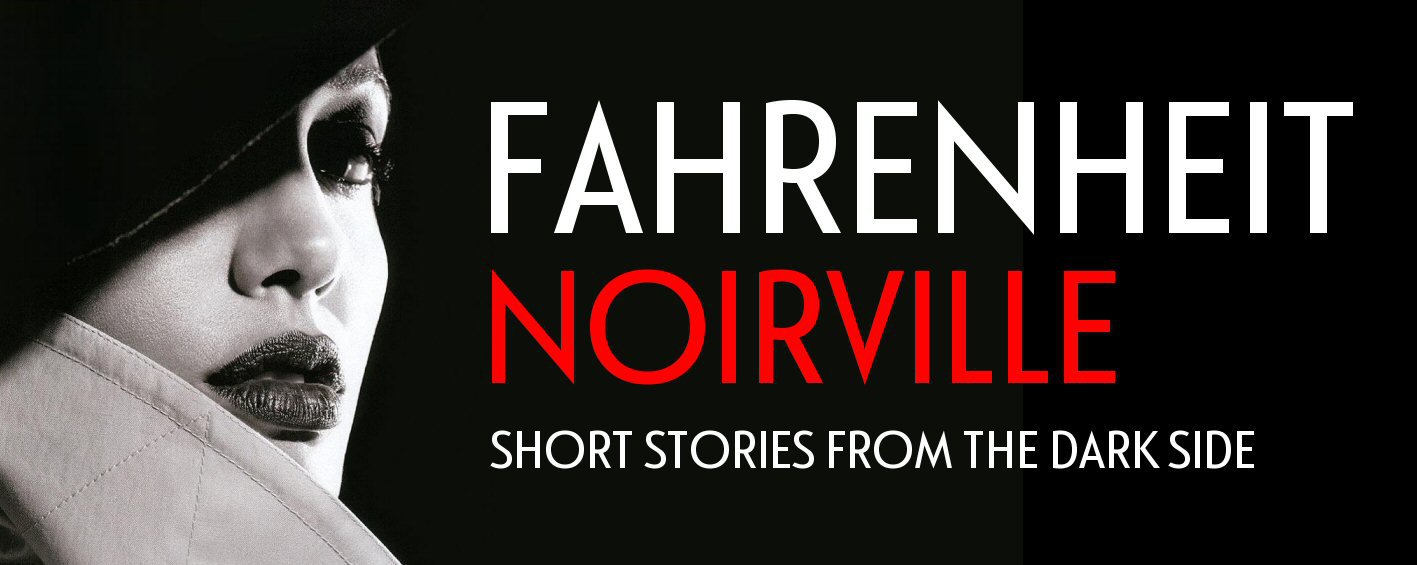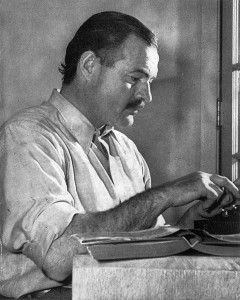My new book Turbulence is published
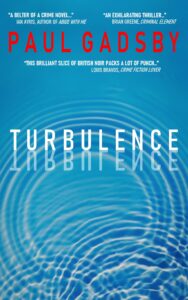
Turbulence, my latest crime novel, has just been published by Fahrenheit Press.
The rippling effects of a violent crime have a devastating impact on six troubled and compelling characters in this multi-viewpoint tale of heartache and hope.
From the offenders and the innocent bystanders to the bank staff and the journalist trying to thread it all together, this book explores how one shocking incident and its turbulent aftermath can connect people from a variety of backgrounds, and how it shapes and haunts them all in different ways.
You can find out more about Turbulence and order the book here. It is available in paperback and ebook (Kindle and ePub). You can also order Turbulence on Amazon here.
Revisiting ‘The Eye of the Beholder’
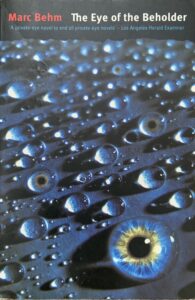
It is 40 years since the publication of Marc Behm’s hardboiled – yet stunningly surreal – PI novel, The Eye of the Beholder.
Later adapted into two films, including a 1999 version starring Ewan McGregor and Ashley Judd, this mesmerising tale from 1980 is an eclectic and experimental triumph – and for me one of the starkest, punchiest noir novels of all time.
The main character, known only as ‘The Eye’, is a field operative working for a corporate private investigation firm in Virginia. His latest assignment is to keep tabs on recent college graduate Paul Hugo, whose wealthy parents are concerned about a deviant young woman their son has gotten himself romantically involved with.
The Eye, long separated from his daughter who he only sees in sporadic illusions, is mentally unstable and finds himself fixated with the woman. He watches the young couple get hitched at the local city hall in a rushed ceremony and follows them on a drive to their honeymoon, becoming very much a voyeur now. When he watches the new bride calmly kill Paul that evening, dispose of the body and enjoy a peaceful night’s sleep, The Eye becomes infatuated.
Relinquishing his professional and legal obligations to report what he’s seen, he follows the woman to New York where, adopting a different alias and physical appearance, she befriends another wealthy male victim and kills him for the cash and cards he has on him. Worrying about the shallowness of the grave she’s buried him in amongst the trees, The Eye reburies the body deeper into the woods, fearful that if she gets caught, his days of watching her will be over.
He soon discovers that the woman has plenty of aliases and wigs as she criss-crosses the nation getting her hooks into one well-heeled victim after another – sometimes setting up a longer-term scheme by playing the bride for an inheritance payout, sometimes just helping herself to a quick score.
The Eye carefully watches her habits and does some research to find out her true identity, Joanna Eris, and uncovers a tragic past that explains her emotional detachment to the murders she carries out with such a callous flair. Picking up the trail again and living off his savings after the PI firm fires him, he sees Joanna marry an extremely affluent blind man. When her husband is killed in a car accident, The Eye watches the devastated Joanna scream in genuine, gut-wrenching pain and realises that this partner wasn’t one she intended to bump off.
Following her and watching her exploits – and sometimes helping to cover her tracks when her back is turned – becomes a way of life. Years, decades, pass. His twin obsessions of his lost daughter and the haunted, murderous Joanna dominate and warp his brain. Eventually, he works up the courage to approach Joanna and speak to her for the first time, thinking he can transform their bond into something more meaningful, more real. But the fates have another ending in mind.
Despite being a slender book, The Eye of the Beholder spans 30 years and covers nearly 100 killings. It’s an extraordinary work; brutal yet tender, rapid yet epic, and of course viciously bleak. A nihilistic descent into hell. Few books have explored themes of manic desire and sociopathic behaviour with such heartbreaking lyricism and relentless intensity.
Behm, born in New Jersey in 1925, became engrossed in French culture while serving there in the US army during the Second World War, and later moved to France permanently. He was a screenwriter as well as a novelist, penning the script for The Beatles’ movie Help! in 1965. He wrote seven novels between 1977-94 and died in Fort-Mahon-Plage in 2007. A gifted storyteller, The Eye of the Beholder is undoubtedly his finest work and deserves to be remembered for many years to come.
[Top]James Ellroy – always standing above the crowd
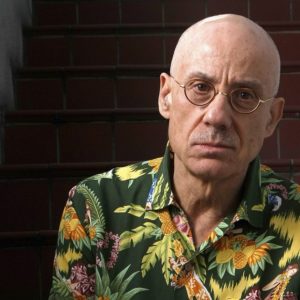 Born on this day in 1948, James Ellroy is possibly the most unique author that modern crime fiction has to offer.
Born on this day in 1948, James Ellroy is possibly the most unique author that modern crime fiction has to offer.
As successful as he is talented, Ellroy’s renowned staccato prose has attracted a deluge of fans and plaudits over the years. The American’s passion for bringing an array of crooked characters – many of them brutally so – to life on the page has seen him produce an exceptional list of books that have been gripping readers for the best part of four decades.
I first came across his work in the early 90s when I was getting into the crime genre. Looking for something at the other end of the spectrum to the cosy mysteries I’d been reading, I spotted on the bookshelves of my local indie a copy of Brown’s Requiem (his debut, published in 1981) and delved in. Boy, was I rewarded. The heavily-clipped writing style immediately appealed; darker and edgier than anything I’d read before, such an unsentimental tone to it, so authoritative, so knowing. He seemed to have a vice-like grip on both his characters’ motivations and how the world worked within a corrupt environment, making the story feel authentic to the core.
There was even better to come. Clandestine and Silent Terror (the latter was also published as Killer on the Road) continued exploiting the same themes of corruption and evil, before Ellroy catapulted to fame with what became known as the ‘LA Quartet’ (The Black Dahlia, The Big Nowhere, LA Confidential, White Jazz from 1987-92). I actually read these out of order first time around as I had difficulty tracking down The Big Nowhere in the pre-digital age, but they all work as cracking standalones.
Many of his works are intrinsically linked to real-life events, most notably the Black Dahlia being a high-profile murder case from 1947. Ellroy also mixed fact with fiction by using various political elements that led up to the JFK hit for his densely-plotted ‘Underworld Trilogy’ of American Tabloid, The Cold Six Thousand and Blood’s a Rover (published between 1995-2009).
The mean streets of post-WW2 Los Angeles have had a huge influence on his life and career, a period of course dripping with noir-esque imagery and nostalgia. The ruthless edge Ellroy brings to his work appears to come from his thirst to depict a variety of dishonest and damaged characters from all walks of life, including elite political circles. Put simply, no one writes about bad guys doing bad things as convincingly as Ellroy.
His tastes for dark scepticism and the callous things in life can also be connected to a traumatic incident in his childhood. When he was 10, his mother, Geneva Hilliker Ellroy, was raped and murdered. The case remains unsolved, despite Ellroy himself teaming up with a retired homicide detective to try and dig up new leads over an intense 15-month period in the 90s – an investigation that he chronicled in the non-fiction book, My Dark Places.
When discussing his own work, Ellroy has never been shy to place himself on the highest of pedestals, often using his media appearances to enforce his reputation as an overpowering presence as well as a hardboiled nihilist. He once said: ‘I am a master of fiction. I am also the greatest crime novelist who ever lived. I am to the crime novel in specific what Tolstoy is to the Russian novel and what Beethoven is to music.’
And also: ‘I’m the demon dog with the hog-log, the foul owl with the death growl, the white knight of the far right, and the slick trick with the donkey dick. I’m the author of 16 books, masterpieces all . . . these books will leave you reamed, steamed and dry-cleaned.’
At 6ft 3in tall, Ellroy naturally comes across as a larger-than-life character, and when he trots out some of the above quotes, he clearly stands out a mile from the more modest, understated approach adopted by many authors in public. But that’s the way it should be with inimitable stylists. His work is different to other crime writers, and it’s fitting that his personality is too. Literature needs a brazen force like James Ellroy.
[Top]What is the ideal length for a book?
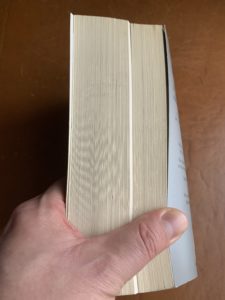 Ah, this old chestnut. Discussion amongst writers, agents and publishers (but rarely readers, I find) often swings around to word count. How long should a book be? Has this changed over the years, and, if so, why?
Ah, this old chestnut. Discussion amongst writers, agents and publishers (but rarely readers, I find) often swings around to word count. How long should a book be? Has this changed over the years, and, if so, why?
Firstly, this will depend on the type of book (fiction/non-fiction/narrative non-fiction) as well as the genre. Each category has, over time, been pegged with certain word lengths determined by industry insiders attempting to gauge audience wishes and expectations. For the sake of this article, let’s talk about fiction books. There was a post recently doing the rounds on social media that I found interesting, where a New York-based literary agent advocated a ‘suggested word count chart’ published by Writer’s Digest.
In short, the suggestions ran as follows:
Below 70,000 – you’re too short
70-80K – it’s ok, may be short
80-90K – sweet spot
100-110K – probably ok, might be long
110k+ – unless you’re sci-fi or fantasy, you’re too long.
The post gained a fair bit of traction, with many stating that these word counts are too long and need refining. Chris Black, Senior Editor of indie publisher Fahrenheit 13, responded by saying: ‘Harsh. I’ve known plenty of greats in the 50-60K range. Take 40k off each category and it’s about right.’ Other comments such as ‘Love a nice tight story’ and ‘60-65k is gold’ were also commonplace.
I must say I sided with this view. Modern readers now have their book reading time seriously compromised by the constant consumption of the (entirely relevant and individually defined) information available on their mobile phone, as well as other bespoke entertainment options such as Netflix. Not to mention, in many cases, increased commuting times – and for those outside of London, that means driving. Few people have many chances to regularly sit down and read big chunks of a work at a time. To suggest below 70,000 is too short is crazy, especially in my preferred genres of crime/noir/mystery.
Some of my favourite contemporary writers such as Ken Bruen and Scott Phillips are often in the 60-70,000 range and sometimes below that. It’s also easy to forget that many classics didn’t subscribe to the ‘big is best’ theory. A Clockwork Orange was approximately 59,000 words long, while Ian Fleming’s debut Bond novel, Casino Royale, came in at 44k. Try these others for size: The Big Sleep (55k), The Spy Who Came in From the Cold (61k), The Great Gatsby (48k), Fight Club (49k), The Hitchhiker’s Guide to the Galaxy (47k).
I enjoy a sprawling James Ellroy as much as anyone, but if I want to get through 15-20 books a year to give myself a variable literary experience, I need plenty of reads where brevity was the author’s watchword.
There is too much emphasis within the publishing industry (I’m mainly looking at the big 5 here) on length, and conforming to the belief that readers associate a thick book with value for money. Are they really that bothered? The ones I speak to aren’t; they just want something they feel they’ll enjoy. A blurb with a strong hook is surely more powerful than bulkiness?
The same could be said for films. Want to plan the rest of your day around watching a new movie? Most of them are over two hours now, many towards or over three, as the companies want to justify the rising cinema ticket prices. I’m a big 90-minute fan. I want the story to be the experience, not the ‘cinematic experience’ to be taking up half my day with ads, trailers and a bloated main feature.
Going back to social media, I see many posts from writers (new and established) who are putting themselves under pressure by tracking their progress purely to word counts. ‘Phew, 5,000 words done today, target met!’
Yes it’s important to gather momentum when taking on such a sizeable project, but bashing out words for the sake of numbers can lead down a dangerous path. While the saying of ‘you can’t edit a blank page’ is obviously true, editing 5,000 crap words can take a whole lot longer than focusing on quality from the start. I’d rather spend a day writing 500 beautiful words than 5,000 churned-out ones.
Word counts are still important because they serve as a guide to how much of our investment, in terms of time, is required. However, don’t let this detract from more powerful factors such as organic pacing and storytelling. If you’re penning a novel, just focus on telling the story you want to tell in the first draft and consider those marketing-based word-count formulas later if you must. If you’re a reader, just continue enjoying the stories.
[Top]“Thrills, spills, emotional depth” – Back Door to Hell continues to impress readers
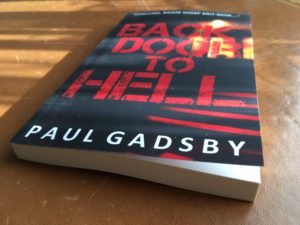 The positive reviews for my noir crime thriller Back Door to Hell keep rolling in.
The positive reviews for my noir crime thriller Back Door to Hell keep rolling in.
Highly revered author and jazz musician Mark Ramsden, writer of eight novels including The Sacred Blood and Dread – The Art of Serial Killing, gave Back Door to Hell a full five stars in his review on Goodreads.
He wrote: ‘Thrills, spills, emotional depth. Back Door to Hell’s fugitive couple have rightly drawn some comparisons with True Romance . . . this is as exciting as a Quentin Tarantino script.’
‘Events unfold realistically rather than for effect or as an homage. There’s accurate social commentary, good sense of place. This does not take place in an alternative comic book universe: Back Door to Hell is real,’ he added.
‘Very soon after starting you have to know what happens next. Which isn’t what you thought it would be yet makes perfect sense. Highly recommended.’
Another review written by US-based crime fiction aficionado Nicola Parry said: ‘This is a great read.’
‘Paul Gadsby reeled me into this story with a relaxed writing tone that kind of left me feeling like I was an onlooker in it, watching the crime play out . . . I dare you not to be rooting for this crime duo as they trip around England, trying to avoid the consequences of their actions.’
‘I don’t know why, but all the way through this book, I could hear Pulp’s ‘Common People’ playing in my head.’
‘Overall, it’s brilliant, harrowing, and poignant. It’ll definitely leave you wanting more.’
Another reviewer on Amazon wrote: ‘Back Door to Hell takes us on a journey from South London to The Lakes, The North Sea Coast and back again at breakneck speed in the company of two engaging young anti-heroes.
‘If George Pelecanos had come from this side of the Atlantic, his prose would sound like this … Gadsby’s attention to detail and character development within a crisply executed story cannot be faulted.’
Further feedback for Back Door to Hell can be found here and here, while more information about the novel is available here.
Back Door to Hell is available in both paperback and ebook formats from Amazon or direct from publisher Fahrenheit Press.
[Top]“A very British True Romance” – further praise for Back Door to Hell
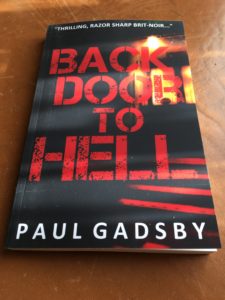 More rave reviews have been flooding in for my noir thriller Back Door to Hell.
More rave reviews have been flooding in for my noir thriller Back Door to Hell.
After an initial burst of positive feedback from critics and fans on publication by Fahrenheit Press, the novel has received a further batch of excellent reviews from all corners of the globe.
Critically-acclaimed crime author Aidan Thorn called the book ‘A very British True Romance’ in his review posted on the Fahrenheit website.
‘So much to enjoy here,’ he added. ‘The relationship between the two young thieves, reminiscent of Clarence and Alabama in True Romance, the depth to the often neglected bad guy, Crawford, with a glimpse into his home life. All of that is wrapped in a cat and mouse that despite the depth remains tense and interesting.’
Over on AustCrime, a website based in Australia that focuses on Australasian crime fiction as well as books from around the world, Gordon Duncan wrote: ‘Back Door To Hell really stands out.’
‘The story of boy meets girl, boy is convinced by the girl to take part in a robbery, all does not go to plan and boy and girl go on the run seems on the surface to be a familiar one, there are however many more layers to this excellent noir novel.’
‘Nate and Jen . . . not only need to trust each other, they must also decide who else to trust if they are to survive. I highly recommend reading Back Door To Hell to find out if they do.’
On The Irresponsible Reader blog, based in Idaho, USA, HC Newton said of the novel: ‘This is a fast-moving book, and the pages just melt away . . . It’ll draw you in and keep you riveted through all the twists and turns. And each time you start to think you know what’s going to happen, Gadsby will tell you that you’re wrong. And then he’ll throw a curveball at you.’
‘This is a treat folks, you’d do well to indulge.’
[Top]10 thrilling cat-and-mouse chases
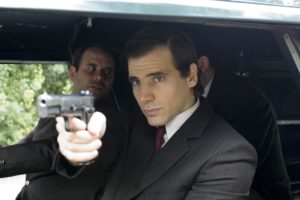 I recently wrote an article for the Criminal Element website about my favourite fictional chase sequences that helped inspire my new novel Back Door to Hell.
I recently wrote an article for the Criminal Element website about my favourite fictional chase sequences that helped inspire my new novel Back Door to Hell.
The piece, titled ‘The best cat-and-mouse chase thrillers in crime fiction’, explores 10 examples of captivating stories – ranging from the classic to the modern – that feature a significant chase as part of the plot, from police pursuing criminals to villains hunting after each other.
Take a look and let me know at @PaulJGadsby if you think I’ve missed any crackers out.
[Top]Glowing reviews for Back Door to Hell
 My newly-released noir thriller Back Door to Hell is going down a storm with crime fiction critics and fans.
My newly-released noir thriller Back Door to Hell is going down a storm with crime fiction critics and fans.
Early reviews have praised the novel’s pace, characterisation and the tense storyline which keeps readers on the edge of their seat until the end.
American freelance writer and book reviewer Brian Greene posted a review on the highly revered website Criminal Element, labelling Back Door to Hell ‘an exhilarating thriller’ and ‘a novel that seems ripe for film adaptation.’
He adds: ‘What sets Back Door to Hell apart is its naturalness… While other contemporary crime fiction scribes go out of their way to make sure their books have the fashionable noir qualities, there’s no such affectation in Gadsby’s work. His characters are believable, his storylines are interesting, and his writing is organic. And he excels at revealing the multiple dimensions of his characters’ life situations and internal makeup.’
Meanwhile on another illustrious crime website, Crime Fiction Lover, reviewer Louis Bravos said the novel was a ‘brilliant slice of British noir which packs a lot of punch and says a lot about modern-day Britain.’
His review adds: ‘Back Door To Hell is as tense and edge of your seat as any heist novel, packing a lot into 200 pages plus change. What really separates it from others in the genre is how believable and contemporary it is.’
Over on Goodreads, one reviewer said: ‘The action & plot twists alone are enough to keep you turning the pages… The prose is smooth & clean with enough detail to provide atmosphere but never at the expense of pace… As I was reading, I couldn’t help but think ahead & wonder how it would end. There are several choices, at least one of which would have been disappointingly unrealistic. Thankfully, the author chose an ending that is sobering yet oddly hopeful. And now I have a new (to me) author to follow.’
The reviews on Amazon have also been extremely positive. One review said: ‘Fast moving story well written. Couldn’t put it down for wanting to find out the next twist and turn. Lots of action with plausible characters.’
Another wrote: ‘What a great book, fast, pacey, I couldn’t put it down. I would highly recommend it, you won’t be disappointed,’ while another said: ‘A fabulous read! I was engrossed in the story and really rooted for the main 2 characters. I highly recommend this book.’
‘A thrilling read from start to finish,’ wrote another. ‘A great plot and moments of genuine tension throughout with a climax that plays on the emotions. Gadsby sets the scene from the mean streets of south-east London to a cross-country chase superbly. A real page-turner.’
The popular, award-winning ‘Beardy Book Blogger’ also loved the novel, saying it was ‘a true rollercoaster of a book. It is short and to the point and really draws you into the story. There is no dead air here; Paul Gadsby keeps the pace high and the tension is palpable throughout.’
Click here for more details about Back Door to Hell and how to buy direct from publisher Fahrenheit Press.
[Top]Back Door to Hell now on sale
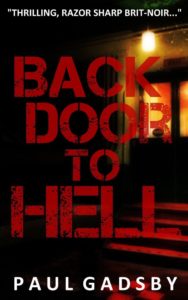 My new noir thriller Back Door to Hell has just been released by Fahrenheit 13.
My new noir thriller Back Door to Hell has just been released by Fahrenheit 13.
The publisher of the coolest collection of hard-boiled noir and experimental crime fiction on the planet (their words, but independently verified by several sources as absolutely true) publishes a new book on the 13th of every month, and January 2019 is the turn of my second full-length novel.
Back Door to Hell is a lean and pacey thriller that follows a young couple on the run after they steal a shedload of cash from a South London underworld crime boss.
More details about Back Door to Hell can be found here, while you can order or download the book direct from Fahrenheit 13 here or alternatively from Amazon on Kindle here and on paperback here.
It’s available at a fantastic price as well, from just £1.69 on ebook and £8.95 on paperback as a special new-release offer – so get in quick while the generosity lasts.
[Top]Publishing deal for Back Door to Hell
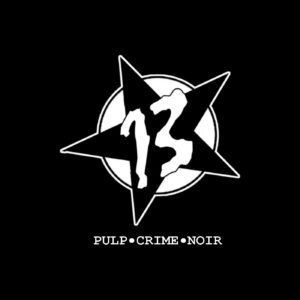 I’m delighted to reveal that my new crime novel, Back Door to Hell, will be published by Fahrenheit 13 in the New Year.
I’m delighted to reveal that my new crime novel, Back Door to Hell, will be published by Fahrenheit 13 in the New Year.
The publisher’s senior editor, Chris Black, and I have been working on the edits over the last few months and the book is all set for release in January 2019.
Fahrenheit 13 is an imprint of Fahrenheit Press, one of the coolest, bravest and most important independent publishers around, devoted to providing readers with the finest and most original crime fiction on the planet.
Back Door to Hell is a fast-paced noir thriller that follows a young couple who, desperate to improve their lives, embark on an audacious cash robbery that results in a cat-and-mouse chase around the country.
The book is my second full-length published crime novel, after Chasing the Game, and my second collaboration with Fahrenheit Press after my short story Washed Up was selected to be included in their groundbreaking Noirville anthology following an open competition.
More news about Back Door to Hell will be announced here in due course. Watch this space and all that…
[Top]Why Dodgers is the book of the decade so far
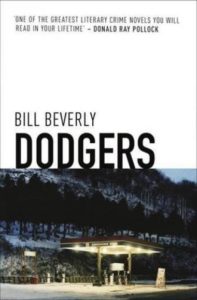 Some books impress you for their slick writing style or their gripping story. Or their well-drawn characters or the captivating world they carve into your imagination. Dodgers doesn’t impress you. It chisels itself into you. It overpowers you. It stays with you.
Some books impress you for their slick writing style or their gripping story. Or their well-drawn characters or the captivating world they carve into your imagination. Dodgers doesn’t impress you. It chisels itself into you. It overpowers you. It stays with you.
Bill Beverly’s debut novel, published in 2016, came out of nowhere. The author, Associate Professor of English at Trinity University in Washington DC, doesn’t appear to be your average breakthrough novelist. At the time of writing he has yet to release another work of fiction, so cashing in while his name is hot isn’t on his agenda. According to interviews, he took his time penning Dodgers. It was worth the wait.
Giving himself no deadline as he wrote, he went against what many new writers are encouraged to do by agents in the modern publishing climate: plan everything with a long-running series in mind. Culminating far too often in a stale, recurring main character doing the same things again and again. No, Dodgers is purely a standalone tale – as all the great works of literature are.
Relayed in meticulous and economical third-person prose, we follow the journey of 15-year-old LA ghetto soldier East in what can be described as both a crime caper road trip and a coming-of-age saga, a contemporary thriller in dialogue and place with the stylistic undertones of a classic fable.
East, the eldest son of a troubled single mother, works for a drug peddling crew, just like pretty much everyone else he knows on the streets of the bleak African-American suburban landscape he has been raised, where the prospect of a violent death is constant. Resourceful, watchful and earnest, he has a natural flair for survival – and he’s going to need it.
The crew’s boss, Fin, needs a Wisconsin-based witness killed before the guy can testify against his nephew in an upcoming trial. Fin tasks East, his trigger-happy 13-year-old half-brother Ty, and two other young crew members – the overweight Walter and the cocky Michael – with travelling across America to carry out the hit.
Hopping on a flight is deemed by Fin as too traceable, so he sets them up with a van kitted out with sleeping quarters and money for petrol and basic leaving expenses. The gang of four are forced to ditch their IDs, cards, phones and weapons so they can’t be identified if caught. They are all given LA Dodgers baseball jerseys to wear as cover, hence the title.
East has never been outside his home city before, and the country and terrain is alien to all of them. It’s not long before the quartet are at odds with each other as well as the job, and it turns out that Ty is carrying, having hidden a small pistol in his trousers. It’s okay, he’s only the most unstable of the four in that van.
Things don’t go to plan. The four of them have to improvise under pressure as things fall apart amidst a backdrop of the Midwest heartland rusting to a slow death. Characters are tested as the drama heightens. The van is vandalised and spray-painted with a racial slur. The mission flips. East and Michael have a vicious punch-up, the group splits in stages.
East, wise but with plenty still to learn, naïve yet world-weary, carries so much weight and humanity. He is one of the most original and heartrendingly authentic characters I’ve ever read.
The book is sharp and taught, while everything that happens is driven by a convincing rationale. These characters don’t have many choices to make, if any at all. The plot is simple and tense; there is no need for coincidences or twists. The observations Beverly draws are insightful and relevant, the visuals he paints in your mind are startlingly real.
Dodgers has drawn merited comparisons to HBO gem The Wire and picked up Golden Dagger Awards for both best crime novel and best debut. For me, nothing has matched it for many years. We had some great releases in the noughties and Dodgers is, so far, the best book of the 2010s (is that what they’re calling this decade?).
Check it out. If you already have, read it again.
[Top]Ebooks v paper books
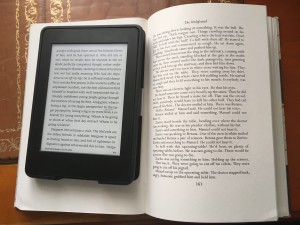 As a hardened disciple of traditional books – and not to mention a stubborn adversary to change – I was late in joining the rush to purchase an e-reader.
As a hardened disciple of traditional books – and not to mention a stubborn adversary to change – I was late in joining the rush to purchase an e-reader.
But a couple of years now after shelling out on a Kindle Paperwhite, I’ve learnt to appreciate the benefits and accept the drawbacks of digital reading.
With surveys highlighting a recent decline in ebook sales in the UK, the impact of digital reading is becoming a lot more interesting now we’re past the initial ‘new wave’ phenomenon. So now seems an appropriate time to reflect on my pros and cons of ebook and paper reading…
Ebooks – the pros
Storage: I no longer have to sweat about the prospect of squeezing yet another bookcase into the spare bedroom.
Portability: The days of allowing enough space – and weight, if flying abroad – in the suitcase for books when packing for a holiday are over.
More flexible reading experience: When lying in bed or reclining on a sun lounger, an ebook is without doubt easier to hold than a paper book that is typically twice as wide and usually requires two hands.
Cost: They’re cheaper than traditional books (although in many cases not as cheap as they used to be).
Ebooks – the cons
Imagery: They’re black and white, diluting the important pleasure of fully admiring the front cover or any images inside.
Checking back: I just need to go back a couple of chapters – or was it a few more? – to remember an incident or minor character that’s returned to the action. I use the scroller at the bottom of the page to guess where it is I need to jump back to, but it takes time – I’m hopping around only able to see one page at a time. Flicking back through physical pages seems to give me a quicker and firmer steer of a narrative’s history.
Sifting through the archives: I often delve into books I may have read months or years before just to recall a particular passage. It’s much nicer (and easier, I find) to browse the spines on the bookshelves, pluck out the book I need and skim through the pages rather than scroll through my electronic library of previous books in order of purchase. Searching through previously read books on an e-reader just feels like a more laborious, soulless process.
Progress just isn’t a percentage thing: Mmm, I’m 63% of the way through a book. Although I appreciate the mathematical accuracy, I much prefer to gauge how far I am through a story by judging the weight of the tome in my hands, or closing it with a bookmark in place and checking out the top-of-the-page edges.
Paper books – the pros
Physicality: Any paper book is an actual thing that was printed, bought and sold (perhaps many times over), and is in your possession for however long you wish. Each and every book is an artefact, with its own look, feel and smell; each mark, blotch, fade or fold making it unique. It’s also available for you to consume whenever you like, just by flipping the cover. There are no batteries to run down or technical hitches. Once my e-reader froze and wouldn’t re-start properly for a couple of days.
Screen break: Like many of us, I spend all of my working day in front of an electronic screen. Yes e-readers come with a smart light setting that can be dimmed in dark rooms to help your eyes, but there’s nothing quite like reading for pleasure while giving yourself a screen break.
Sharing: You can swap and share favourite or recommended reads when meeting up with friends and family, adding a social element to your reading experience.
Casual ownership: If you’re on the beach and fancy a dip in the sea, you feel pretty easy about leaving a paper book by your lounger while you wander out of sight. It’s difficult to take that casual approach with a £100+ device that holds much of your library.
Paper books – the cons
You need light: At night, you have to turn on a light or bedside lamp and risk disturbing your partner.
No choice on presentation: Some books just seem to come with an ugly font or a too small/large type size – and you can’t do anything about it. With ebooks, you can adjust all of that to suit your liking.
The waiting game: Unless you’re in a bookshop (and there’s obviously not many of those left), you can’t just decide to buy a book and then have it seconds later, unlike when ordering an ebook with literally just one click. When ordering a paper book online, more often than not you’re waiting a few days, or sometimes weeks, and at the mercy of the mail delivery companies.
Bad for the environment: There’s no getting away from the fact that, even in these times of sophisticated recycling schemes, the production of paper and ink for printing has a harmful effect on the environment. How this compares to the greenhouse gas emissions of e-readers, however, is up for debate.
Which side are you on? Drop me a line at @PaulJGadsby to discuss the ebook v hard copies debate.
[Top]
